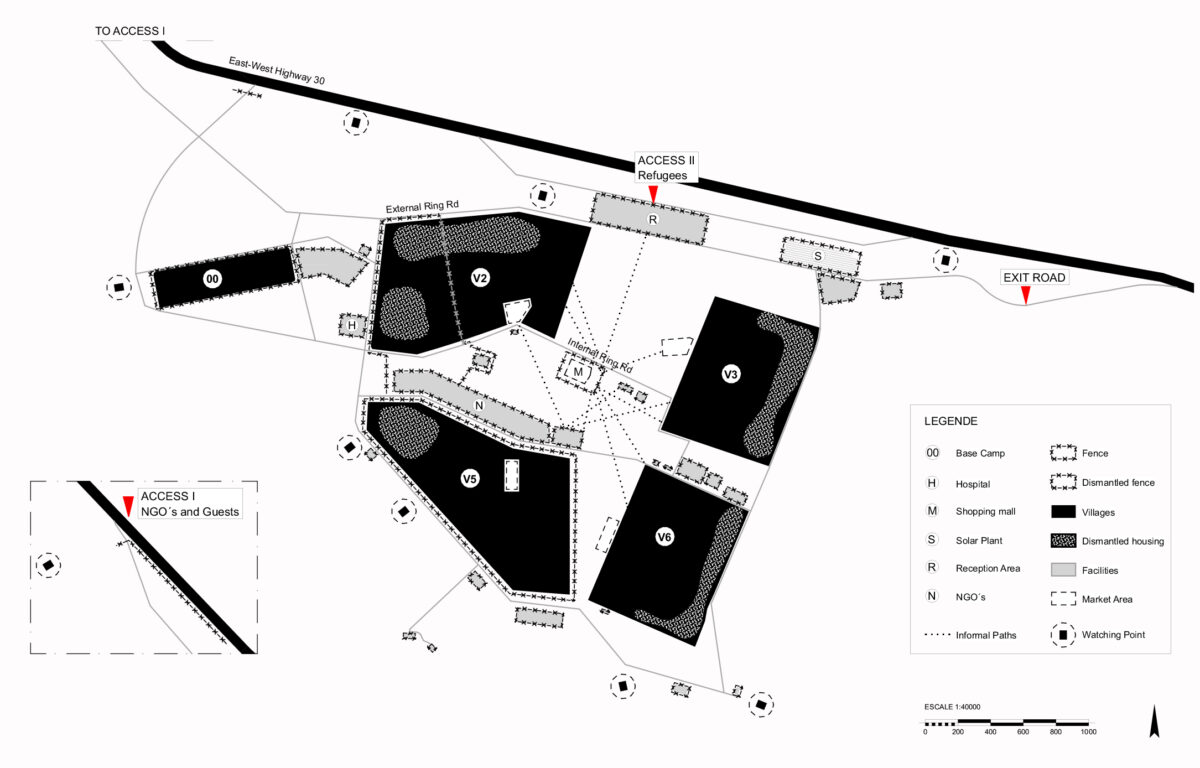Architectures of Mistrust
This thesis was written by Leticia Palomino under the framework of the project “Architectures of Asylum”. It explores the connections between camps’ planning and other spaces of segregation such as the prison, the gated community and the military camp.
Abstract:
In the first years of the Syrian civil war, thousands of refugees fled daily to Jordan searching for asylum. In an attempt to control the massive influx of Syrian population, camps were established as a solution for emergency shelter. Coordinated efforts of the Jordanian Government and the United Nations culminated in the planning of an unprecedented camp. The design of Azraq camp encompasses the collaboration of architects and planners from various parts of the world. However, not everything is designed for comfort. Azraq camp has to comply with a strict national security agenda due to three main threats: population poverty and scarcity of resources due to immigration, riots and criminality as in Zaatari Camp, and the accommodation of refugees suspected of belonging to ISIS. This thesis builds on past research made on securitization in the humanitarian arena and camp planning by adding a strong spatial focus. The thesis claims that securitization in Azraq camp is delivered through spatial planning and architecture is used as a disciplinary tool. The employment of certain architectural strategies like distancing, fencing and visibility axes establish a power relationship that subordinates the inhabitants, and guarantees order, control and the sovereignty of the state. At the same time, this thesis also sheds light on the bottom-up practices that subvert this planning, opening a dialogue in the negotiation of space and, thus, shaping power relationships. These findings are based on observations during field visits conducted in May 2019, interviews with UNHCR camp planners, former experts in the field, and refugees. Further findings were obtained by comparing and analyzing extreme forms of securitized territories using Google Earth and architectural plans. The study of these securitized territories has been fundamental in recognizing the architectural strategies used for discipline and control.
-
StudentLeticia Palomino
-
FundingErasmus+
-
Year2019-2020
-
TypeMaster Thesis

-
 Comparing the entrances of different types of architectural typologies such as the prison, the gated community and the military camp (Courtesy: Leticia Palomino)
Comparing the entrances of different types of architectural typologies such as the prison, the gated community and the military camp (Courtesy: Leticia Palomino) -
 A view into a military base camp adjusted with housing (Courtesy: Leticia Palomino)
A view into a military base camp adjusted with housing (Courtesy: Leticia Palomino) -
 Watch towers in Azraq camp (Courtesy: Leticia Palomino)
Watch towers in Azraq camp (Courtesy: Leticia Palomino) -
 A view on Azraq camp showing watching towers in the back as a reproduction of the panopticon (Courtesy: Leticia Palomino)
A view on Azraq camp showing watching towers in the back as a reproduction of the panopticon (Courtesy: Leticia Palomino)